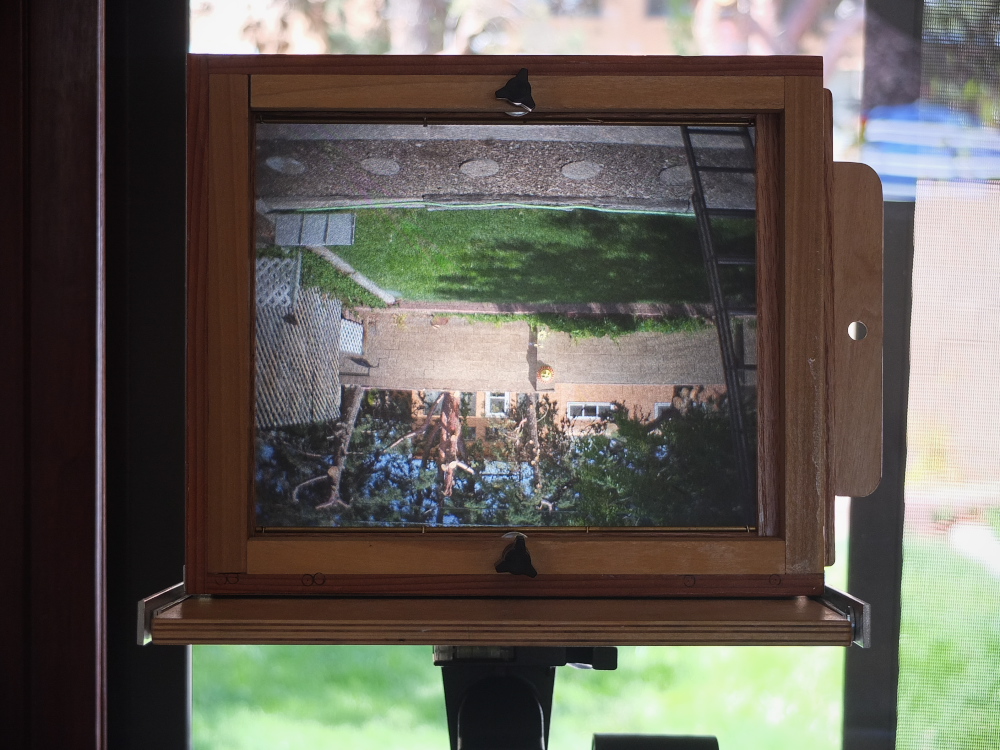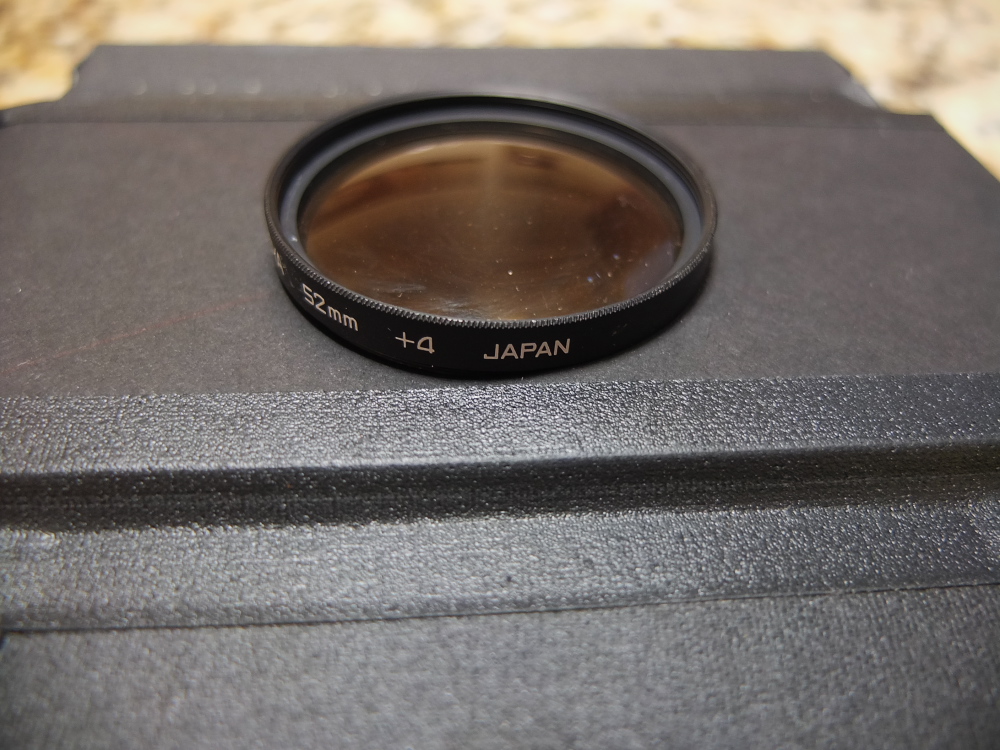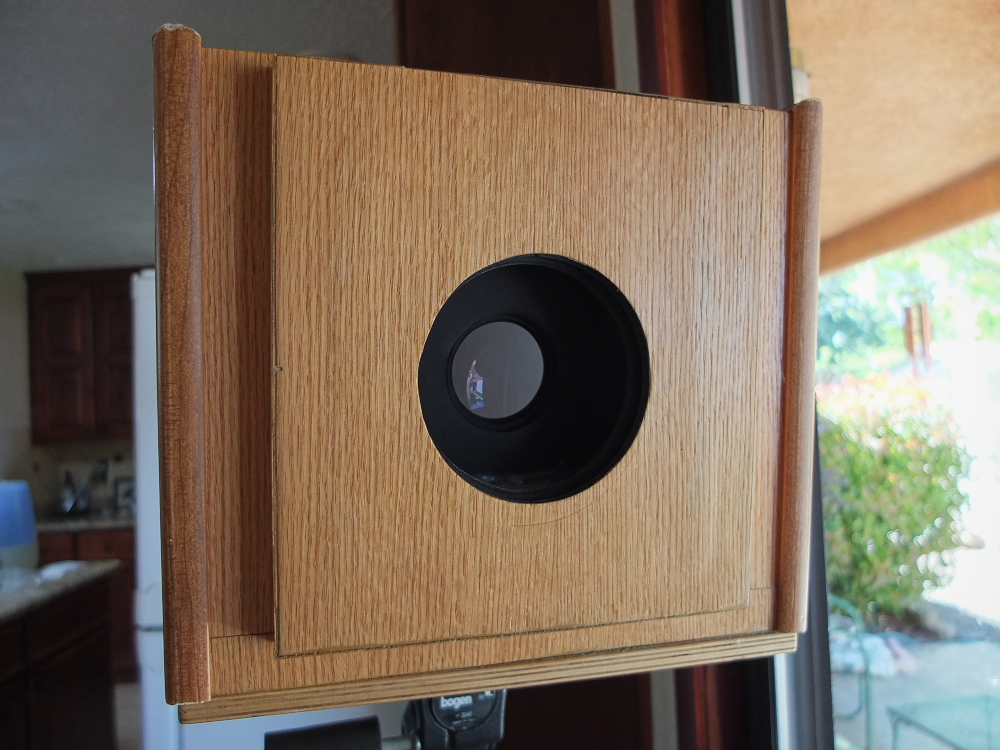You Never Know

You never know what you might find, that's been my experience. This was the case when a coworker, who had been ridding her house of clutter in preparation for a move, found a bag of camera gear and gifted them to me.
I had expected the usual antiquated film camera with a less than premiere assortment of lenses, and some outdated or redundant darkroom equipment, and I was not disappointed in that regard. In the bag I found a Canon AE-1, which needs a special battery in order to find out if the electronics are functional (the usual culprit being a dead IC chip) and a Sears-branded lens, along with some filters, a development tank and some outdated printing paper.
The paper might prove to be useful as in-camera paper negatives, while the development tank is entirely redundant, worthy of reselling via Craig's List or eBay. There was also a mercury darkroom thermometer, accurate but slow to respond, more useful for calibrating my dial-indicating thermometers than for actual darkroom use.
I was about ready to dismiss this entire bag of potential photographic treasure as merely worthy of the flea market when, rummaging through the bottom of the bag, I came across what at first looked like a lens filter, but proved to be the most promising item in the entire selection of gear, a +4 diopter close-up lens. This is a single-element, coated glass meniscus lens mounted in a threaded filter ring. Why is this such a promising find? Because it has a focal length of around 10 inches, and can project a coherent image large enough to encompass an eight-by-ten-inch film plane.

What on first appearances looked like just another miscellaneous filter now promises to be a large format camera lens, once properly mounted in a box camera, of which I have a particular handmade tailboard box camera just waiting to receive the new lens.
In its day, the Canon AE-1 was a top-of-the-line, consumer-grade film SLR. Millions of them were sold, and it's not uncommon for almost everyone to have known a relative in their family who had one. As cameras go, they're a fine film camera, but I don't have a selection of Canon-mount lenses in my collection, nor do I wish to start collecting them. There's also the problem that the electronics on these cameras are known to give out, decades afterwards. I'll have to bring this one down to the camera repair shop and see if it's still functional.
I'm also not willing to shoot much more 35mm film, as I've determined, despite the fact that I have a small collection of various types and models in good working condition, I'd rather spend my money on film, processing and prints of medium format, where there's a much greater bang for one's buck.
However, there's this other aspect of finding used photographic gear, which is to repurpose it for some more interesting usage mode. In this case, redeploying a magnifying close-up lens as a large-format camera lens is just up my alley. Meniscus lenses were the very first type of lens to be employed in the earliest cameras. They are defined as being a single lens element with one side concave and the other convex. In use, the concave side is positioned in the camera pointing toward the subject, and aperture stops are positioned a certain distance in front of the lens.
The result of creating images with meniscus lenses can be very representative of the earliest days of photography, especially when combined with orthochromatic paper negatives that render the subject in that distinctive 19th century tonal pallet.
This Sunday afternoon, I made a foamcore board adapter plate and mounted the meniscus lens into my eight-by-ten-inch tailboard camera. The lens is recessed a bit behind the front aperture plate slot, which positions the lens almost ideally for the camera to achieve infinity focus with the two halves of the box camera nested as close together as possible, and without any vignetting from the aperture stops; almost as if this box and that lens were intended for each other. I will take this as a good sign of things to come, image-wise.
As a test of the closest focusing distance for this lens & camera combination, with the rear box-half slid all the way rearward on the tailboard, a close focus distance of 30 inches was measured, close enough for portraits or still-life compositions.

I've made a number of aperture plates for this camera over the years, since it's played host to a number of improvised and adapted lenses, from industrial lenses, binocular lenses, Xerox machine lenses, etc. With this 250mm focal length meniscus lens, the 3, 6, 9, 17 and 34 millimeter aperture plates will effectively render f-stops of f/83, f/42, f/28, f/15 and f/7.4, respectively (at infinity focus); enough of a selection to permit a wide variety of exposure settings for virtually any kind of light. Of course, since the camera normally lacks any kind of mechanical shutter, exposures are made using a lens cap, implying that exposure times need to be long enough (at least 1 second) so as to be accurate and repeatable.
It's appropriate to mention that determining exposure for close-up settings requires the photographer to know the f-stop value corrected for the so-called bellows extension. Why this happens is that, as the camera is focused close-in, the focal length required to render the object in sharp relief gets longer and longer, limited by how long the camera will extend. Since the definition of an f-stop is focal length divided by aperture diameter, any given f-stop will be effectively a larger number when focused close-up as compared to infinity. On this camera, I have a distance scale on the side of the body that renders a readout of the focus distance (from lens to film plane) measured in millimeters, while each aperture plate is also indicated with its aperture diameter (also in millimeters), implying that, after focusing upon the subject and selecting the appropriate aperture plate, all I need do is read off the focus distance and divide it by the aperture diameter to arrive at the true f-stop value, corrected for bellows extension, making for more accurate exposures.
It is possible to use this method with any modern large format lens. First, take the lens's rated focal length and divide into it each of the major f-stop values on the lens. These numbers will be the effective diameters of each f-stop, in millimeters. Write them down on a laminated card for handy reference while out and about in the field. Also, take along with your large format camera kit a small measuring tape. I like to use the flexible kind, used for sewing. After setting up and focusing your camera upon the scene, measure the distance, along the side of the camera, from the middle of the lens to the film plane, then divide that by the diameter of your chosen f-stop (as indicated on your reference card). This will give you the actual f-stop value, corrected for bellows extension.
It is only appropriate, as photographic technology grows more sophisticated to the point of becoming ubiquitous, that one rediscovers the essential methodologies from the earliest days of the medium, employing the simplest of lenses and light recording media, because in the process you never know what magic might unfold, what mysteries there might be to unravel.
Post-Script: Though I prefer to display my thoughts in this blog via images of manual typewriter output, I thought it appropriate to break out the little-used Alphasmart Neo, upon which I wrote this piece, considering the Neo is now defunct, no longer in production, as are many of my other writing implements. Photos via Fujifilm X10.

1 Comments:
This is really worth selling on ebay
wholesale liquidation pallets
Post a Comment
<< Home